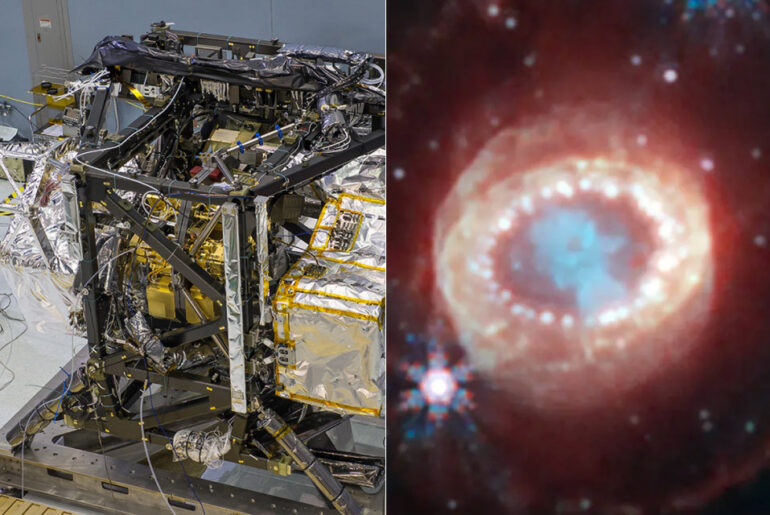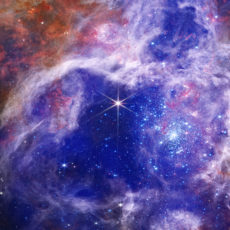
NASA’s James Webb Space Telescope recently observed Supernova 1987A (SN 1987A) with its Near-Infrared Camera (NIRCam), revealing never before seen details. It’s located around 168,000 light-years from Earth in the Large Magellanic Cloud and first discovered 36 years ago.

The first thing you’ll notice is the keyhole-like structure in the center that is packed with clumpy gas and dust ejected by the supernova explosion. The latter is so dense that even near-infrared light that Webb detects can’t penetrate it, while a bright, equatorial ring surrounds the inner keyhole. This results in a band around the waist that connects two faint arms of hourglass-shaped outer rings.
- SMARTPHONE-POWERED SKY TOUR: No experience needed! Just dock your phone, launch the StarSense Explorer app, and follow the on-screen arrows to locate...
- PATENTED STARSENSE TECHNOLOGY: Unlike other astronomy apps, StarSense Explorer uses sky recognition technology to turn your phone into a celestial...
- TONIGHT’S BEST TARGETS, INSTANTLY: The app generates a curated list of the top objects to see based on your time and location. See planets, bright...
Before Webb, the now-retired Spitzer telescope observed this supernova in infrared throughout its entire lifespan, yielding key data about how its emissions evolved over time. However, it was never able to observe the supernova with such clarity and detail,” said NASA.










